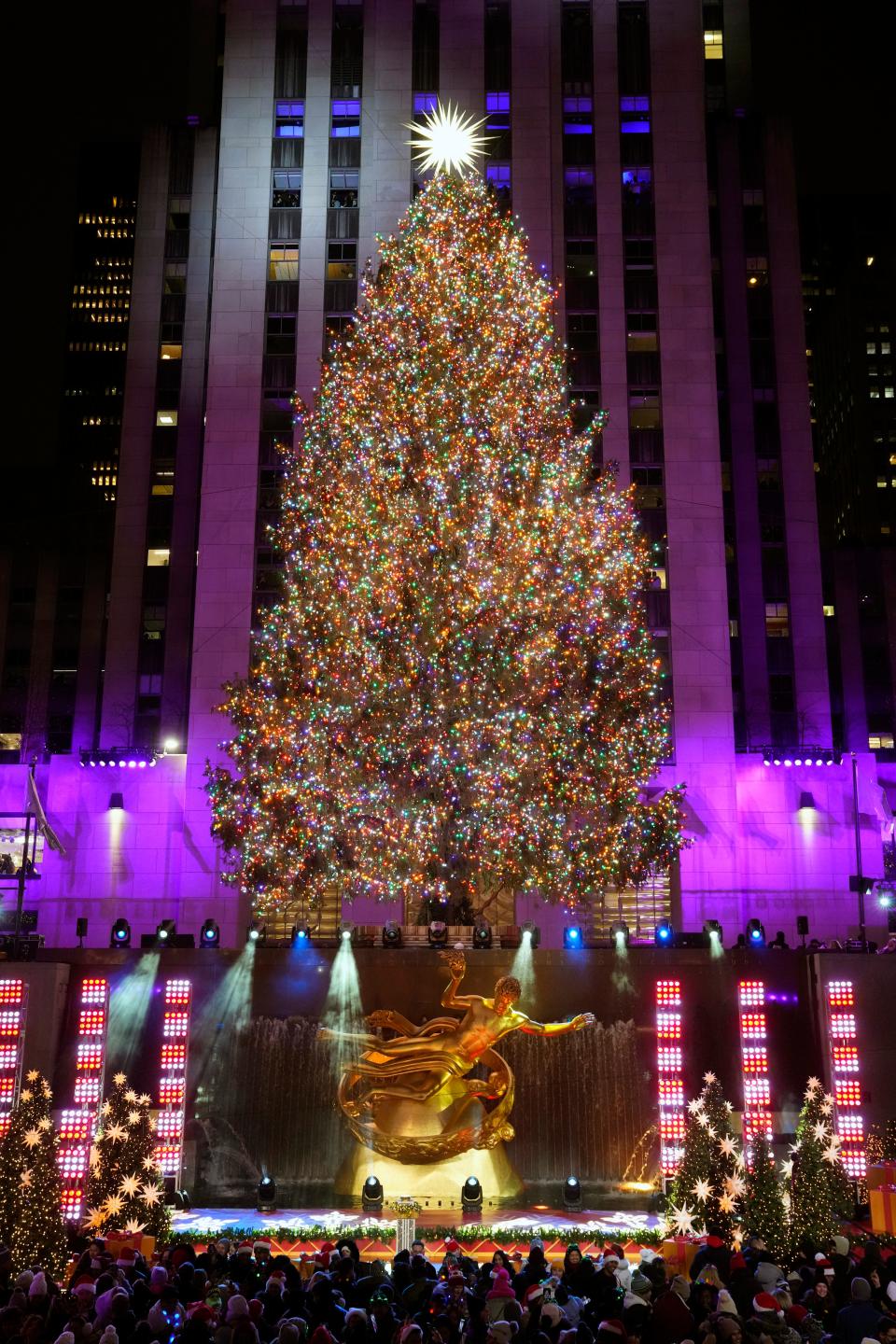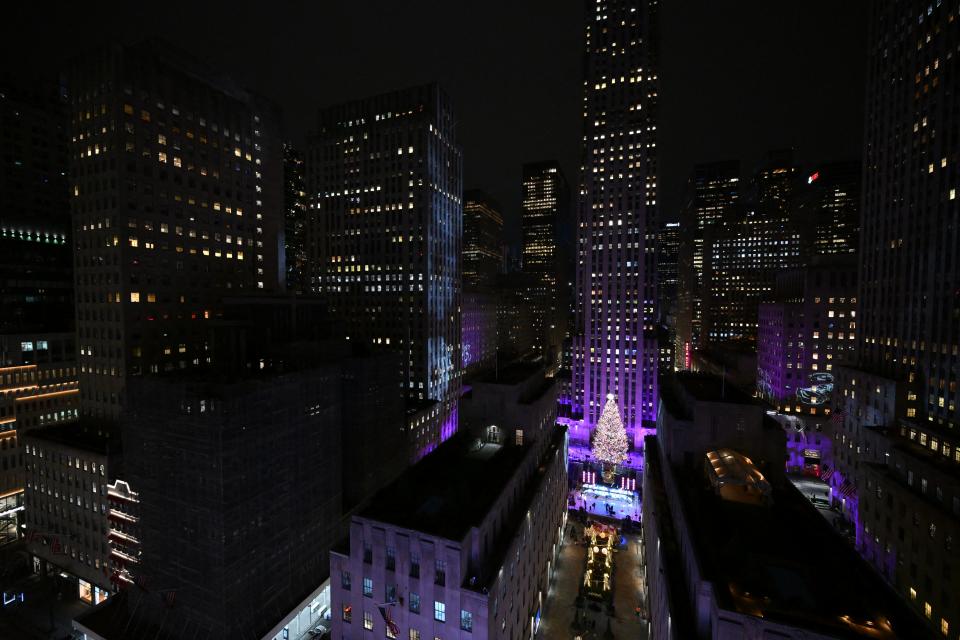What happens to Rockefeller Christmas trees after they come down? It’s a worthy new purpose.
Every year, the lighting of the Christmas tree outside the Rockefeller Center dazzles crowds and signals the beginning of the holiday season in New York City.
The hullabaloo that the nationally-televised spectacle attracts is enough to make Santa Claus himself green (or, perhaps in his case, red) with envy. Even when the ceremony comes to an end, the brightly-lit tree stands tall as New Yorkers and tourists alike gawk at its imposing size.
But the weeks wear on and Christmas comes and goes. And when all the presents have been unwrapped and the magic of the season fades, the Rockefeller tree comes down with little of the same fanfare.
But what happens next to the grandiose trees also deserves attention. For the past 16 years, lumber milled from the trees has been donated to Habitat for Humanity and used to construct new homes.
Here's everything to know about a Rockefeller tree's journey after its stop in Midtown Manhattan.

Toppled Christmas tree: Winds topple 40-foot National Christmas Tree outside White House
What happens when the Rockefeller Center Christmas tree comes down?
Every year since 2007, the Rockefeller Center has donated lumber from its Christmas trees to build Habitat homes.
At the end of the season, the Christmas tree is taken down and cut into large pieces, which are transported to a mill in New Jersey where the initial rough sawing is done, Habitat spokeswoman Erika Bowditch told USA TODAY. From there, the pieces are brought to a landscaping company to be dried in a kiln, milled and planed until they are soft and smooth.
The finished beams are then shipped to a Habitat affiliate that uses the lumber in a home under construction. Most of the Rockefeller trees are Norway Spruces – just like this year's 80-footer – which is a soft, flexible wood best used non-structural purposes like flooring, furniture and cabinetry, the spokeswoman said.
Often, the wood is stamped with a Rockefeller Center logo along with the year in a prominent area of the home, Bowditch said.
"We hope that the millions of people who take delight in the annual tree lighting tradition each year become curious about the tree’s journey," Amy Dunham, Chief Communications Officer for Habitat for Humanity International, said in a statement to USA TODAY, "and (become) inspired to learn more about our mission and how they can help us share the joy of warmth, family and home with Habitat homeowners."
How many homes have been made from Rockefeller tree lumber?

Habitat homes from New York to Mississippi have been constructed partially with lumber from Rockefeller Christmas trees.
The first homes in 2007 were built in Pascagoula, Mississippi from a Rockefeller tree from Shelton, Connecticut. Homes in New York, Connecticut, New Jersey, Pennsylvania and California have since included wood from the vaunted Christmas trees, though Habitat was not able to specify just how many.
In 2022, lumber from the Rockefeller tree was given to Glen Falls Area Habitat for Humanity in Moreau, New York. The materials were used to build a small patio deck and planters for a homeowner who closed on the home earlier this year, Bowditch said.
Rockefeller Center Christmas tree: See photos dating back to the 1930s
How are homeowners selected to live in one of the houses?
The homeowners who come to live in houses made with Rockefeller Christmas tree wood are selected no differently than for any other home, according to the organization.
However, the homeowners who apply and are selected to live in a home made with the Christmas trees are made aware of the wood’s special history, Bowditch said.
In most cases, the Christmas tree lumber is sent to a Habitat affiliate in the state where the tree was grown.
"We’re grateful for our continued partnership with the Rockefeller Center," according to a statement from Habitat for Humanity to USA TODAY. "This generous yearly donation is a symbol of renewal, as the lumber from these trees takes on new purpose in Habitat homes for generations to come."
Eric Lagatta covers breaking and trending news for USA TODAY. Reach him at elagatta@gannett.com
This article originally appeared on USA TODAY: How Rockefeller Christmas trees end up in Habitat for Humanity homes

